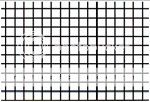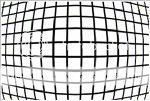I very nearly bought another pedal. I tried to justify it with how bulky my present Boss DD-20 was, and that I needed a smaller delay pedal to bring along for small sessions.
When I objectively examined the features of the DD-20 versus the few pedals I was trying out, the same verdict kept coming back: the DD-20 is more than enough, and I really don't need the reduction in size. What was the initial draw in wanting to buy a new pedal? A false sense of prestige? Bragging rights amongst fellow guitarists?
Which one is it? That is a question all of us guitarists have to answer and be accountable for in our spending. Be honest in your evaluation of gear needs. It may save you easily $200.
When I objectively examined the features of the DD-20 versus the few pedals I was trying out, the same verdict kept coming back: the DD-20 is more than enough, and I really don't need the reduction in size. What was the initial draw in wanting to buy a new pedal? A false sense of prestige? Bragging rights amongst fellow guitarists?
Which one is it? That is a question all of us guitarists have to answer and be accountable for in our spending. Be honest in your evaluation of gear needs. It may save you easily $200.


















